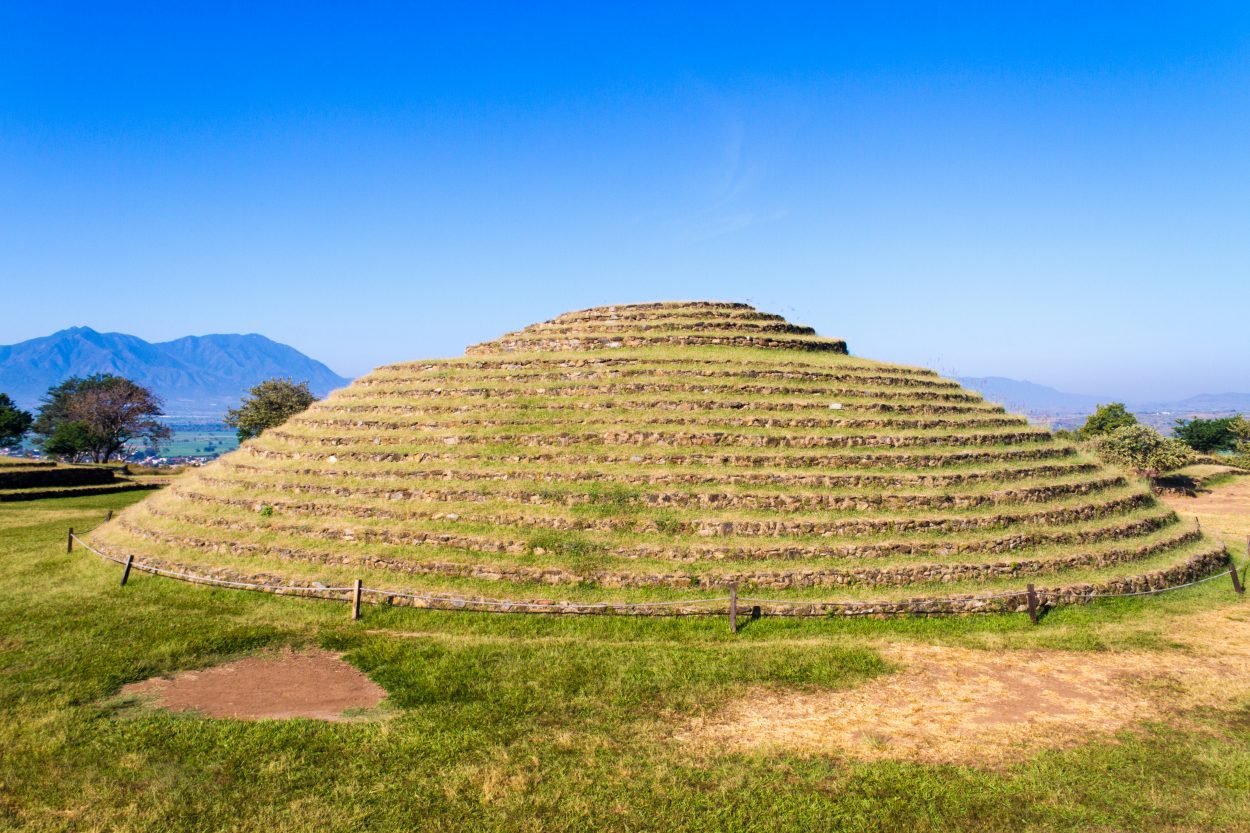Los Guachimontones was a ceremonial centre attributed to the Teuchitlán Culture, located near the present-day town of Teuchitlán in the state of Jalisco, Mexico.
The Teuchitlán Culture emerged during the Late Formative Period around 300 BC in the Tequila Valleys, developing a distinctive monumental style of architecture with the construction of concentric circular plazas, and pyramidal platforms called guachimontones.
There is some evidence of activity at Los Guachimontones as far back as the Middle Formative Period (or Tequila I phase from 1000 to 300 BC), where ceramic sherds in situ, and the levelling of the surrounding landscape indicate a centralised community structure.
By the Late Formative Period (or Tequila II phase from 300 to 100 BC), ceramic evidence suggests a growing population that began to construct large, monumental buildings such as the guachimontones, the largest guachimontones being Circle 1 that dates from between 160 and 40 BC.
Los Guachimontones reached its apex during the Early Classic Period (or Tequila III phase from 100 BC to AD 200), where the population reached over 9,000 inhabitants (although some sources propose a population of around 3,500 people).

The city consisted of nine guachimontones, a major and minor plaza, two ball courts, and various residential mounds, whilst the associated site of Loma Alta nearby consists of five guachimontones, one ball court, and one major plaza.
The guachimontones were circular pyramidal structures that had quadrangular platforms ranging in number from four to sixteen, rising up to a central altar. Interpreting the structures has led to alternate theories, with J. Charles Kelley suggesting that a large pole was placed on the summit for the volador ceremony, still practiced in Mexico today.
Other theories propose that the structures represented the sun, an artificial mountain (which in many Mesoamerican beliefs were associated with their deities and the underworld), or simply an important place for ceremonial gatherings such as feasting.
By the Late Classic Period (or Tequila IV phase from AD 200 to AD 450/500), monumental construction ceased, and the population of Los Guachimontones went into decline. During the Postclassic Period from AD 900 to AD 1400, the ceremonial buildings appear to be abandoned, and instead, the inhabitants were living in “ranchos,” or small house groups, located on top of, or nearby the abandoned ceremonial buildings.
Header Image Credit : Tlatollotl – CC BY-SA 4.0 (Adapted)





